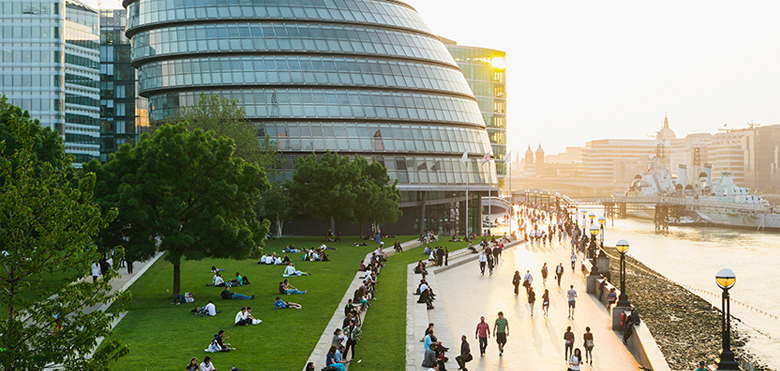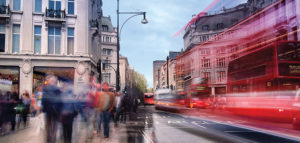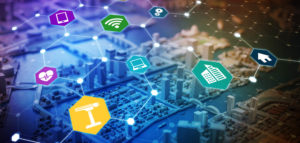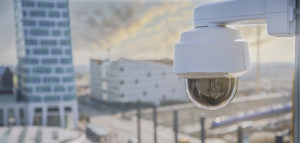Using KPIs to measure smart city progress
There is a wide range of definitions for “what makes a smart city”. It’s a question that doesn’t have a straight and universal answer as it means different things to different people. Another question that’s at least as important is “how do you create a city smart”. Because no matter what it means to you, a city needs a strategy to achieve that goal.
Help for city planners comes in the form of U4SSC: United 4 Smart Sustainable Cities. It’s a United Nations Initiative that encourages the use of information and communication technology (ICT) to support a smooth transition to smart cities. One of the most remarkable activities of the initiative is the development of key performance indicators (KPIs) for smart sustainable cities (SSC). They consist of indicators that evaluate the smartness and sustainability of a city and as criteria to the contributions that are made towards this goal. The KPIs and are divided into three main categories: economy, environment and society/culture.
Technology – including network cameras, sensors and analytics – can be a helpful and even essential tool to reach numerous of the defined goals. In this article, we’ll show how.
Crime prevention & ensuring safety of citizens
A city is defined by its citizens and can only be attractive to people if it provides a high level of safety and security. While one of the U4SSC KPIs refers specifically to the violent crime rate per 100.000 inhabitants, crime and antisocial behavior can take many forms.
The use of network surveillance cameras in crime prevention and security is not new of course, with most cities using a comprehensive network of cameras to both reduce the overall crime rate, respond to incidents and bring criminals to justice. As technology has evolved, a combination of cameras, microphones and sensors can detect threats such as gunshots, raised voices, people entering prohibited areas or suspicious vehicles loitering near critical infrastructure. Being able to take action before something happens and being in a position to respond rapidly and appropriately to incidents and emergencies, increases citizens’ sense of safety and makes a city more efficient in its fight against crime.
A great example of how cities are using surveillance cameras to reduce the crime rate comes from Detroit, where ‘Project Green Light ’ has resulted in a reduction of delinquency of up to 50 percent. This has been achieved through the integration of private video surveillance with that of the Detroit Police Department’s own. Not only does the footage help officers catch criminals and search for suspects, it enables the police to focus on areas where criminal patterns seem to be emerging or that are known for an increased occurrence of crimes.
A similar approach was used in the Brazilian city of Vitória, which was amongst the 15 most violent metropolitan areas in the world. But within a year – through the use of surveillance cameras in key locations and with them the possibility to verify incoming emergency calls in the operations center, the homicide rate dropped by half and the number of stolen vehicles was reduced drastically (55%).
Improved traffic management with surveillance and analytics
As much as many cities are looking to reduce the number of vehicles on their streets, traffic is inevitable. This is perhaps why in one way or another traffic impacts a number of the U4SSC KPIs Traffic monitoring, intersection control, reduction of traffic fatalities, travel time and number of low-emission vehicles are the obvious ones, but traffic will also play a part in pollution and noise within a city. The effective management of city traffic is necessary, and video surveillance plays a central role.
By combining multiple sources of data, surveillance technology can create a more predictive view of the roads and potential bottlenecks or accident sites. Traffic Management Centres (TMCs) monitor and manage traffic, inform traffic users and control traffic flows. However, TMC operators cannot monitor all cameras at all times. Therefore, video analytics which makes increasing use of artificial intelligence (AI) and deep learning technologies can identify issues and allow for proactive management.
For instance, with a smart network video solution, operators will quickly and automatically be alerted when there’s a stopped vehicle where there shouldn’t be one (on the street or a restricted area) or someone driving in the wrong direction. Situations in which acting promptly is essential to prevent fatal accidents and keep traffic flowing as smoothly as possible (which also brings environmental benefits as queues of stationary traffic with engines potentially running are reduced or avoided). This system can also be used for license plate recognition, which can detect stolen or unlicensed cars that can be a safety-threat if used for criminal actions, which is often the case.
Ultimately, efficient traffic management impacts all aspects of city livability: from happy commuters to on-time deliveries; from safer intersections to reduced pollution.
The importance of operational efficiency
Effective traffic management also plays a role – but not the only one – in another important KPI: emergency service response time.
For emergency services it’s critical to know the circumstances of an incident as exactly as possible before they arrive so they can prepare accordingly. For instance, how many people are affected and how many ambulances are needed? What type and scale of fire has been started? Is criminal activity ongoing and how serious is it? Surveillance cameras can give a detailed overview of the scene: helping emergency services to better assess the exact position, nature and ferocity of any incident.
In the City of Atlanta the solution has been to combine numerous cameras from different organizations across the city, including public schools, local businesses and multi-family housing properties. The network ultimately consisted of thousands of cameras that enabled the Atlanta Police Foundation to pull video resources from private and public entities into a single command center and get a more holistic real-time view. Atlanta Police Department now has access to 24/7 surveillance throughout the city without the excessive cost of owning and maintaining all those cameras itself. The businesses, on the other hand, benefit from the knowledge that the police can see should there be an incident around their property and can respond more quickly.
But back to traffic. Keeping streets clear so ambulances, fire engines and police cars can get to their destination in the shortest possible time is critical. If a car is illegally parking in a prohibited zone or an area dedicated to other users, cameras can quickly detect the vehicle through advanced analytics software. Once the violation is recognized, law enforcement operators are automatically informed and can react accordingly. Combined with network horn speakers it’s also possible to play an announcement – live or pre-recorded – that urges the driver to leave the restricted area.
Livability & Sustainability – from air to water
While safety and security are key factors that need to be considered in cities, other factors related to the livability of the city mustn’t be neglected. This is reflected in the U4SSC KPIs focused on air pollution, noise levels and monitoring of water supplies and other utilities, as well as severe weather conditions.
The quality of air is directly related to the health of the citizens and the level of livability in a city. Especially in big cities, such as London, New York or Shanghai, traffic has a huge impact on the air quality – something that can be monitored and controlled with a combination of cameras and IoT sensors. The latter is a great extension to the visual data cameras collect. They can either detect the pollutants in the air directly or use information based on, for example, increasing levels of traffic that is used by analytics software to conclude the impact it’ll have on the air quality.
Related to that, there’s the issue of noise exposure in cities. IP cameras equipped with microphones and audio analytics software allow city authorities to measure and analyze noise pollution, again correlating it to traffic but also to crowd levels and any construction works going on in the surrounding areas. The microphones can be set to trigger a message or alert when a certain noise level (or types) is exceeded. In fast-growing cities it’s a convenient way to keep an eye on the noise level and knowing where it originates can be useful if it becomes an issue for the citizens. For example, if traffic noises reach a peak on certain roads at specific times, it can be diverted, or if construction continues outside permitted hours it can be reported.
The monitoring of water supply, an increasingly precious resource, can also be managed with network cameras and associated sensors. With the help of thermal imaging and visible light network the water supplies can be monitored and an alert be sent to the operators should the level fall below a set point. And finally, video surveillance and sensors can help city authorities manage the impact of adverse and severe weather, controlling and reducing the impact of storm waters and snow, and responding to weather danger and damage.
Key steps towards smarter, safer cities
Seeing the many ways in which cameras are already making cities smarter is an indicator of the future that’s awaiting us and the smart cities of tomorrow. With more features and advanced technology, the applications of surveillance solutions will only grow further. Combined with initiatives such as the U4SSC and the defined KPIs contained within them, city authorities now have a framework within which to apply smart technologies to the benefits of all citizens.
Learn more about why you should work with Axis to deliver your smart city.




